What's New
Displaying results 1591 - 1600 of 4052
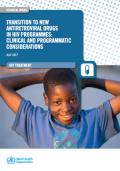
Resource | Publications,
As of June 2017, more than 20 low- and middle-income countries have included or are planning to include dolutegravir (DTG) as a first-line option in their national guidelines. This technical update summarizes the recent evidence and provides programme considerations to support countries on how to transition to new antiretroviral (ARV) drugs for use in first- and second-line ARV in low and middle- income countries.
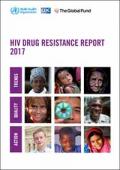
Resource | Publications,
This second HIV Drug Resistance (HIVDR) report has been jointly developed by WHO, the United States Centers for Disease Control and Prevention (US-CDC) and the Global Fund to Fight AIDS, Tuberculosis and Malaria (“The Global Fund”). It provides an update on recent population levels of HIVDR covering the period 2014–2016. The report includes data from 16 nationally representative surveys from 14 countries1 estimating resistance in: adults initiating ART (PDR), children younger than 18 months newly diagnosed with HIV, and adults on ART (acquired HIV drug resistance or ADR).
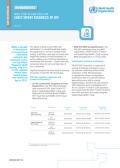
Resource | Publications,
The advent of point-of-care (POC) EID technologies is a breakthrough that creates the opportunity to increase coverage of EID testing. It will allow same-day test results and enable the initiation of earlier treatment, as well as address some of the key limitations of conventional EID networks – in particular long turnaround times for tests and high rates of loss to follow up.
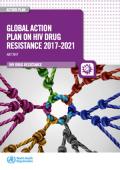
Resource | Publications,
Preventing and managing the emergence of HIV Drug Resistance (HIVDR) is a key component of a comprehensive and effective HIV response, and should be integrated into broader efforts to ensure sustainability and greatest impact. It is essential that actions to monitor, prevent and respond to HIVDR are implemented at the clinical, programme and policy levels to address the many drivers of HIVDR.
The goal of this Global Action Plan is to articulate synergistic actions that will be required to prevent HIVDR from undermining efforts to achieve global targets on health and HIV, and to provide the most effective treatment to all people living with HIV including adults, key populations, pregnant and breastfeeding women, children and adolescents.
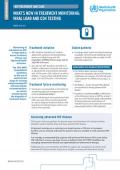
Resource | Publications,
Monitoring of individuals on Antiretroviral therapy (ART) is important to ensure treatment efficacy and improved health outcomes.
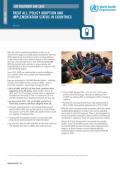
Resource | Fact Sheets,
With the 2016 Consolidated guidelines on the use of antiretroviral drugs for treating and preventing HIV infection, WHO updated and launched new policy recommendations on the clinical and service delivery aspects of HIV treatment and care, and raised the bar to treat all PLHIV (Treat All). WHO has worked with countries to ensure uptake and implementation of these recommendations in support of the to the 90-90-90 targets.
This fact sheet present data for 194 WHO Member States – including 138 low- and middle-income countries (LMIC) – and 35 Fast‑Track countries, respectively through July 2017.
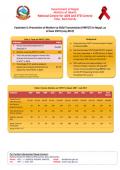
Resource | Fact Sheets,
HIV data on prevention mother-to-child transmission (PMTCT) and early infant diagnosis (EID) in Nepal.
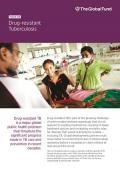
Resource | Fact Sheets,
Drug-resistant TB is a major global public health problem that threatens the significant progress made in TB care and prevention in recent decades.
Drug-resistant TB is part of the growing challenge of antimicrobial resistant superbugs that do not respond to existing medications, resulting in fewer treatment options and increasing mortality rates for illnesses that would ordinarily be curable — including TB. Global development partners must move faster to contain this threat of antimicrobial resistance before it escalates to claim millions of lives around the world.
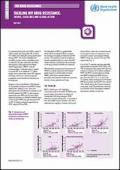
Resource | Publications,
It is estimated that by the end of 2016, nearly 37 million people were living with HIV, of whom 19.5 million were taking life-saving antiretroviral therapy (ART). This number highlights the incredible progress made in expanding access to treatment, but also underscores the effort still required to fully implement the World Health Organization’s (WHO) “treat all” recommendation.
Adoption of the United Nations’ 2030 Agenda for Sustainable Development and WHO’s Global health sector strategy on HIV, 2016–2021 demonstrate the commitment of countries to end the AIDS epidemic by 2030. To track progress towards this goal, WHO and the Joint United Nations Programme on HIV/AIDS (UNAIDS) have set the target of 90% of people living with HIV on ART to achieve virological suppression by 2020, rising to 95% by 2030.
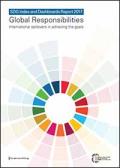
Resource | Publications,
The purpose of the SDG Index and Dashboards is to assist countries to identify priorities for action, in order to achieve the 17 SDGs. The indicators and dashboards should help countries to pinpoint key implementation challenges and the overall index permits an assessment of progress towards the goals and a comparison with peer countries.
This 2017 SDG Index and Dashboard Report presents an updated and revised SDG Index and introduces country dashboards. The report incorporates comments received on the previous version, as well as new data and improvements in methodology.





